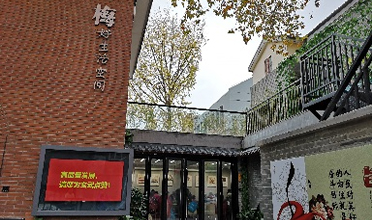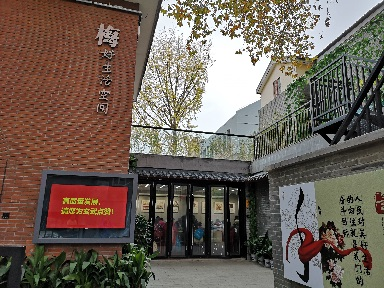



1. Introduction
Historical area is an important spatial carrier of urban historical culture and memory. In the regeneration practice, historical and cultural buildings and the related spaces and facilities are mostly updated by means of commercial operation, while community development with residential function is rarely taken as the starting point. There is influence of historical and cultural resources in the same area on residents: Firstly, as a public space, it provides high-quality places for recreation; Secondly, residents are influenced by culture and have higher pursuit of spiritual and cultural life. Therefore, the special significance of historical sites lies in retaining the city memory and the sense of places through vivid life scenes. The dilemma of residential community renewal lies in: On the one hand, the requirements of style control in historical areas and residents' yearning for high-quality life have certain demand for community space regeneration and cultural activities; On the other hand, because the residential community is less attractive to commercial investment, the person to organize the regeneration practices and places to get the funds have become major problems in practice. This involves related issues of community governance, and from the perspective of "resources, assets, and capital" of the community, the following questions need to be clarified: What is the connection between the community and the surrounding urban space, and what resources are available? What assets in the community need to be protected or updated? What internal and external forces are needed for the long-term development of the community?
Based on the considerations, this study takes Meiyuan New Village Community in Nanjing as an example, reviews the process and results of its community renewal practice, and then dives into the protection and utilization factors that should be considered in community construction from the perspective of "resources, assets, and capital" through field research, and further discovers residents' demands for the use of community space, and then puts forward corresponding planning suggestions from the aspects of mechanism construction and institutional policies in combination with the participants in community governance.
2. Related research progress
Combined with the perspective of this study, the research progress is mainly carried out from two aspects: One is the related research of community assets and capital, and the other is the related research of multi-stakeholders participating in community co-governance, both of which provide theoretical basis and practical reference for this study from the perspective of community development.
2.1 Research on Community Assets and Capital
The research on community assets mainly focuses on clarifying the number and categories of community assets in order to make rational use of them. For example, Huang Ling et al. took communities in mountains in Chongqing as examples from the perspective of community assets, and put forward corresponding planning strategies and implementation paths for the community spatial regeneration, the utilization of cultural assets and the construction of community governance system. The research on community capital mainly involves the reconstruction of community network and the utilization of social capital. Through the community's joint creation and protection of the humanistic social network, its value and significance are concentrated in the process of community spatial regeneration and reproduction. For example, Zhao Wanmin et al. discussed the application and significance of social capital in the protection and regeneration planning of historical and cultural blocks from the perspective of social network; Karin focused on the interactive relationship among "culture, space, and people" and put forward the protection and renewal methods of residential historical areas from the perspective of community development; Liu Xinyi emphasized the significance of social network renewal in residential historical and cultural blocks, and put forward the idea of building community social network from the elderly.
2.2 Research on multi participants in community co-governance
Related research is mostly carried out from two levels: First, it discusses stakeholders involved in community co-governance and the corresponding roles and responsibilities, which usually include government departments, community residents, community neighborhood committees, and third-party participants (such as NGOs, experts, and scholars, etc.); The second is to explore the mechanism and mode of community co-governance, and seek a multi-party cooperation mode and effectively negotiate among different stakeholders, and effective communication. The relevant content has something in common with some studies on community building. For example, Zhao Nannan et al. put forward a community cooperation system composed of four dimensions: land value, local knowledge, social capital, and community good governance; He Yi et al. pondered on government functions, and pointed out that the government should reduce intervention, coordinate multi-party governance, provide policy conditions for long-term development, and reverse the dependence on the one-time large-scale regeneration practice; Xie Dixiang analyzed the roles of various subjects from the perspective of social conflicts and different interests, and emphasized the important role of public participation in the development of civil society.
The existing research has made extensive research on the implementation and governance mode of community regeneration, but in the choice of research objects, there is little research on residential communities with certain particularity and complexity in historical areas. Historical area is a space with special cultural value in the city. In addition to the protection and utilization of explicit material space, we should also pay attention to the inheritance of implicit citizen culture. Therefore, the regeneration of physical environment and the sustainable development of residential communities should be taken into account.
Author: Qian Yufei,Southeast University Architecture College
Source:<https://mp.weixin.qq.com/s/oCI1OG62xcqQj1XDoVE11g>
Translated by Zhang Chenxi